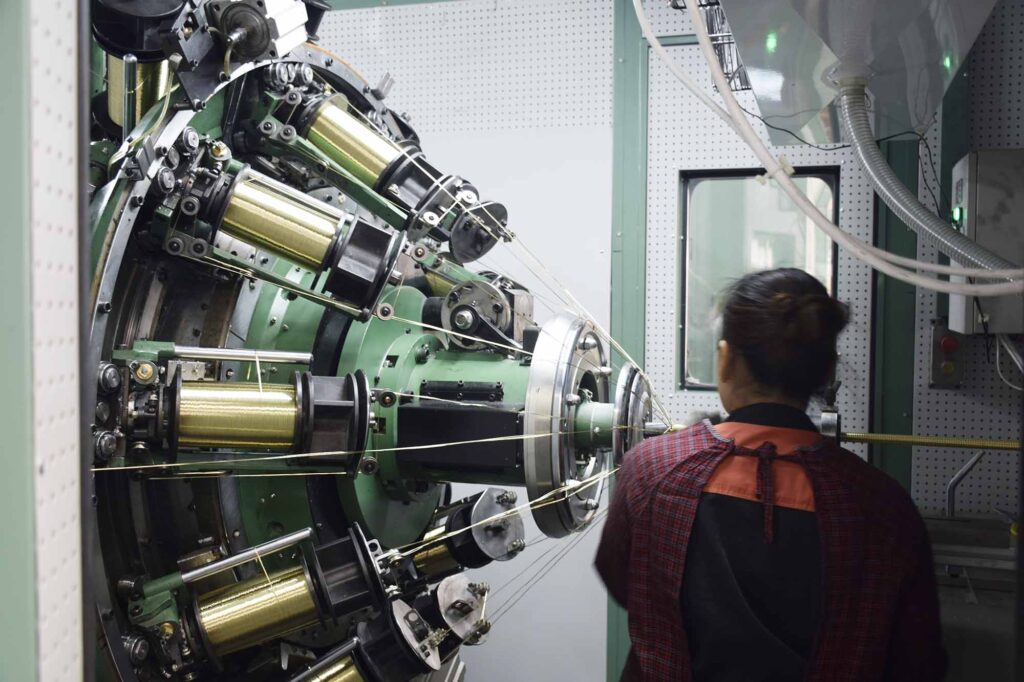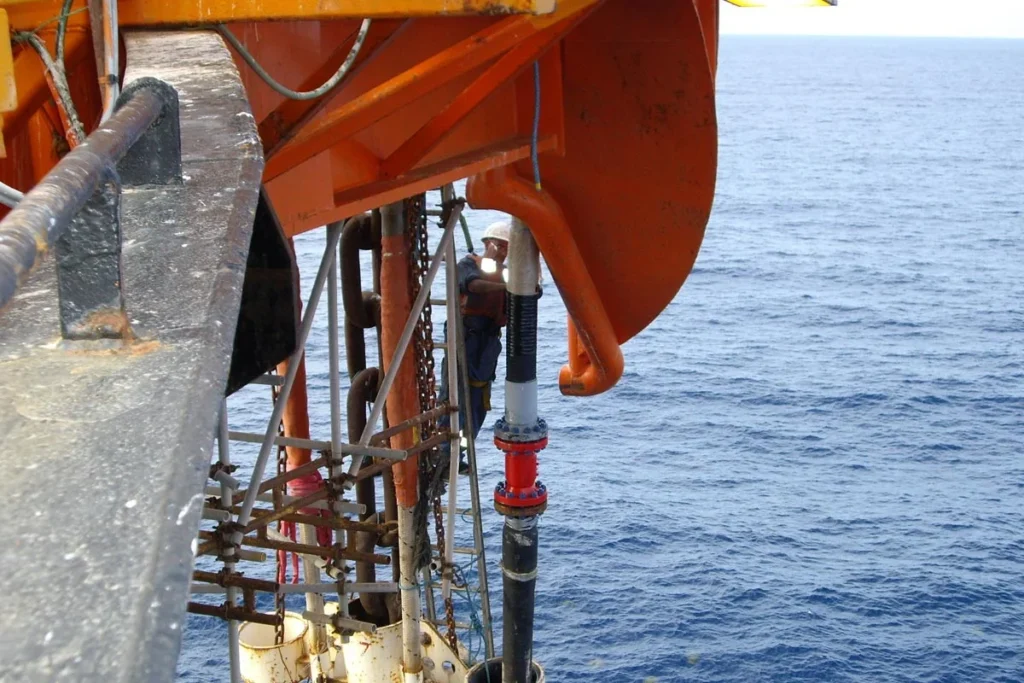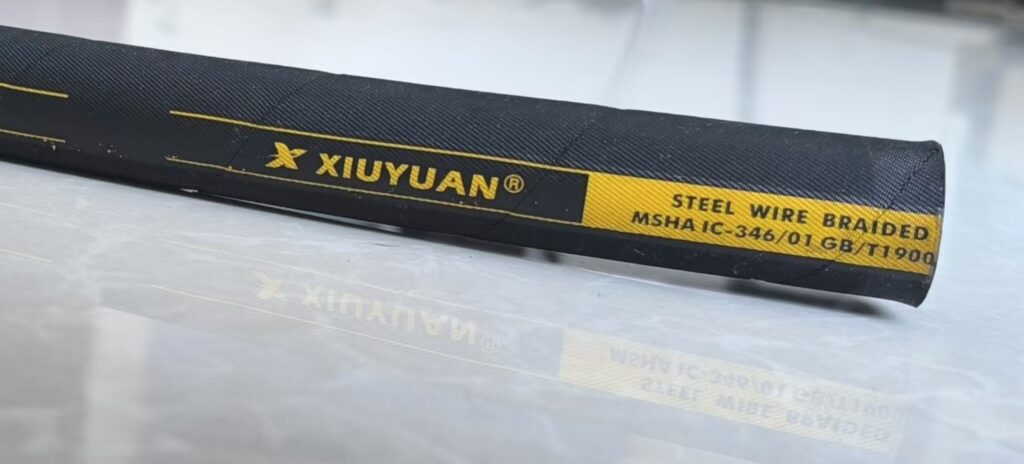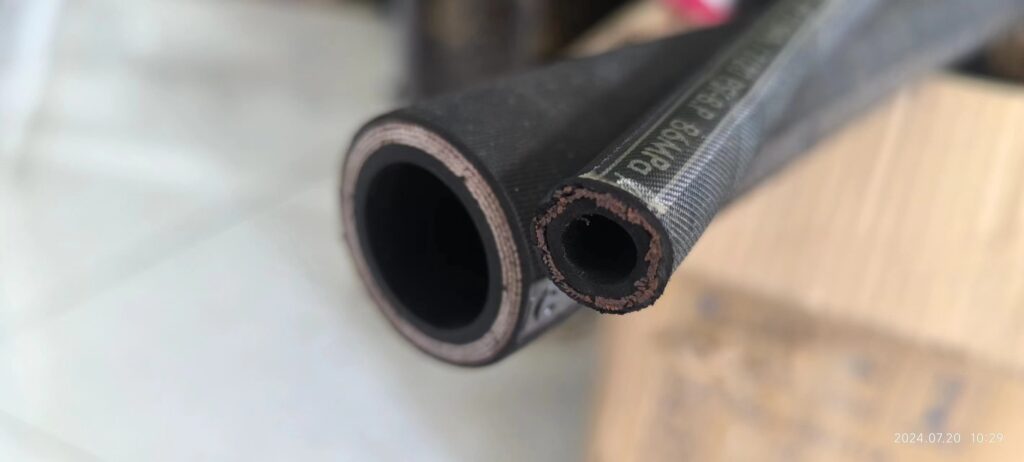1.Cracking of rubber in the lining layer of the hose
Most synthetic rubber formulations include a certain amount of plasticizer to to make the hose more flexible. However, due to the high temperature oil or in the high temperature environment, the plasticizer will spill out at a certain temperature. in a high temperature environment, the plasticizer will overflow at a certain temperature, while the hydraulic cylinders, valves, pumps or other components in the system, due to the pressure drop will make the fluid gradually chemical decomposition, but also will make the lining layer of the hose oxidation, deterioration, hardening, the hose in motion. The lining layer will be cracked when the hose is in motion or bent. When the hose is in motion or bending, the lining layer will crack and produce obvious cracks, and oil seepage will occur after a long time.
Treatment: The lining layer should be replaced when cracks appear. Hydraulic system The working temperature of the hydraulic system should not be higher than the normal temperature for a long time, to ensure that the throttle holes and oil The hydraulic system working temperature should not be higher than normal for a long time. In addition, the quality of the lining layer of the hose should meet the specified Environmental working requirements.
2.Excessive expansion of the lining layer of the rubber pipe
The reason for the expansion of the lining layer is that the rubber material inside the hose does not match the circulating medium, and the temperature is out of the range. and the temperature exceeds the range of use, which makes the hose swell due to chemical reaction. Phenomenon.
Treatment: If this phenomenon occurs, the hose should be replaced, check the If this phenomenon occurs, the hose should be replaced, check the relevant parts connected with the hose (oil tank, oil port, etc.) for residual rubber impurities. At the same time, check the chemical compatibility of the circulating medium and the lining layer material and the working The temperature range is in accordance with the corresponding standard requirements.
3.The cleanliness of the lining layer of the hose is not qualified
The hose is dismantled before assembly, and after the process of cutting and grinding, if If the processing is not meticulous, there will be residual rubber powder, and at the same time in the manufacturing process of the rubber tube The inner wall of the hose will be left with some mixed silicone oil and rubber powder. In addition In addition, metal processing burrs, or other external impurities will also enter the tube, resulting in the lining layer cleanliness. The cleanliness of the inner lining layer is not qualified.
Treatment: The hose with unqualified cleanliness cannot be installed on the machine. machine. After the material is cut off, the residual dust should be blown, and all parts must be cleaned before assembly. Washing clean before assembly, after buckling also need to be high-pressure cleaning, available high High-pressure oil can be used to clean the inside of the hose to blow the residual dust and impurities out of the tube. Ensure that the internal cleanliness of the hose is qualified, and the weight of foreign matter inside the hose after buckling Should not exceed 100mg/m 2 , the maximum diameter of particles should not be greater than 0.4mm.





